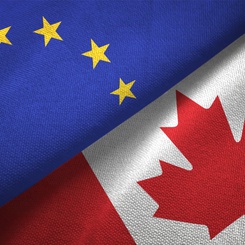With Karine Lamiraud
“Nudges are private or public initiatives that steer people in particular directions but also allow them to go their own way,” noted Sunstein (2018), one of the fathers of this concept.
Following the seminal work by Thaler and Sunstein (2009), nudges became a topic of interest in social sciences and were tested extensively by policymakers aiming at driving people into virtuous behavior (sustainability, law and tax compliance, public health, etc). A “pure” nudge would not increase the level of information of the agents, nor impose or suggest coercion, nor change incentives. It would only raise subjects’ awareness of their own psychological biases and let them think differently about how to achieve the best result for themselves.
In a recent paper in the Journal of Behavioral and Experimental Economics, Karine Lamiraud (ESSEC), Julien Patris (Argenx) and Radu Vranceanu (ESSEC) study whether such light choice interventions can have a positive impact on the value created in a typical business-to-business negotiation. To address this question, the researchers developed a context-based, computerized lab experiment. The two nudges used in the experiment guided participants towards a negotiation path inspired by best practices in the negotiation literature, leading to small wins early in the negotiation, or supporting the benevolent exchange of information.
Negotiation, defined as “back and forth communication designed to reach an agreement” (Fisher and Ury, 1981), is a social interaction as old as humankind. People engage in negotiations on a wide range of matters, from sharing households’ tasks to settling disputes between nations. In business-to-business (B-to-B) markets, bilateral negotiations between buyers and sellers are commonplace, requiring agreement on contract terms. Game theorists have emphasized that in bilateral negotiations, informed and rational agents should agree on a Pareto efficient allocation or contract, where no alternative allocation can benefit one party without harming the other. However, real-world negotiations often fall short of this ideal outcome, leading to inefficient agreements or outright failures, despite the large potential for enhancing welfare of these negotiations. A considerable body of literature in psychology, marketing, and behavioral economics aims to explain the causes of these failures. One common result in this literature is that failures are, in general, rooted in players’ lack of understanding of their opponents’ priorities and the best strategies the latter can use.
The context of the experiment used in the paper is inspired by the European pharmaceutical market, where there is a long tradition of negotiation between pharmaceutical and biotech companies to negotiate the terms of the drug commercialization contract with the National Health Insurance administration. The contract under negotiation contained six clauses, each with several choice possibilities.
The experiment was conducted at the LEEM, the experimental lab of the University of Montpellier, with 240 participants. Participants were randomly matched in dyads at the beginning of the session, and the roles of buyer and seller were randomly assigned. After reading the scenario and the instructions, participants engaged in the negotiation, using an alternate offer procedure. Interaction was computerized and strict anonymity was enforced. Participants could exchange short messages. At the end of the experiment, negotiators received compensation in cash which was proportional to the value created for their organization. While the control group received no particular advice, in the treatment groups participants were invited to negotiate first on the convergent items, or to exchange information about their priority goals, with participants free to do with this advice as they pleased.
In general, the academic consensus is that the effectiveness of nudges varies significantly depending on the nature of the intervention and the domain of application. This experiment revealed a positive value creation effect of attentional nudges in the specific context of a framed, multi-attribute negotiation experiment. In both treatments, the total value created exceeded the control value by approximately 9% of the maximal value that can be created in this experiment. In the experiment, it is the buyer who benefited the most from the additional guidance, while there was no negative consequence for the seller. The results also show that the more time agents spent negotiating, the higher the value created, with the higher gains obtained in the early stages.
The large effect of the two nudges confirms how helpful it can be to negotiate while keeping in mind the interest of one’s interlocutor. In practice, the feasibility of implementing one nudge over the other depends on the organizer of the negotiation process and the information they possess. In the advanced therapy market, the negotiation process follows rules closely elaborated at the EU level. The EU might not know what the convergent/divergent contract items are, and therefore may lack the information to implement the early wins nudge. On the other hand, creating a framework of negotiation supporting trust and information sharing is a goal that EU regulations on therapy transfer can aim to achieve.
References
Fisher, R., Ury, W. & Patton, B., (1981). Getting to Yes: Negotiating Agreement Without Giving in, Penguin Books, New York, USA. (Revised 2nd edition, 2011).
Lamiraud, K., J. Patris, R. Vranceanu, (2024). Can attentional nudges improve efficiency of bilateral multi-attribute negotiations?, Journal of Behavioral and Experimental Economics, 110, doi.org/10.1016/j.socec.2024.102205.
Thaler, R. H., & Sunstein, C. R. (2009). Nudge: Improving decisions about health, wealth, and happiness. London, UK: Penguin.
Sunstein, C. R. (2018). Misconceptions about nudges. Journal of Behavioral Economics for Policy, 2(1), 61–67.








